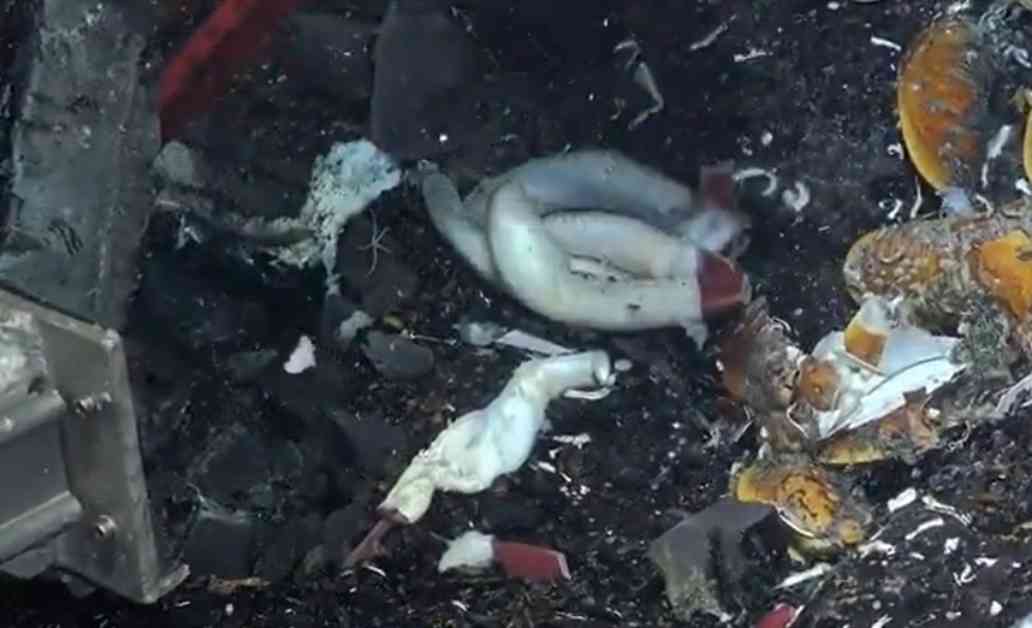Giant worms are reproducing beneath the seafloor at hydrothermal vents in the eastern Pacific, near the Galápagos Islands, according to new research. Scientists believed that only microbes and viruses could survive in this harsh environment, but an exploration by the Schmidt Ocean Institute discovered giant tube worms living there.
These tube worms were found in fluid-filled cavities in the subseafloor of deep-sea hydrothermal vents, which was a surprising discovery. The researchers found tube worms of “record sizes,” with tubes reaching up to 8 inches long for one species and more than 19 inches long for another. These ghostly white creatures were wedged beneath solidified lava slabs along the East Pacific Rise, where tectonic plates converge off the coast of South America.
The researchers were originally looking for larvae of tube worms and other vent creatures, trying to understand how they colonize the vents from inside the Earth’s crust. Hydrothermal vents form in volcanically active regions when water meets magma beneath the seafloor and erupts as hot, mineral-rich fluid. This fluid attracts animals that live in symbiosis with microbes, but how these communities recruit larvae to sustain themselves over generations remains a mystery.
To investigate the possibility of larvae dispersal through the subseafloor, scientists used a remotely operated vehicle (ROV) to explore a vent site 8,250 feet beneath the ocean’s surface. They drilled holes into the seafloor and lifted slabs of rock, revealing fluid-filled pockets within lava layers. These pockets were filled with adult tube worms, suggesting that reproduction may occur beneath the seafloor.
The researchers observed male and female tube worms with sperm-filled testes and egg-filled gonads, indicating a potential breeding ground below the seafloor. Cracks leading from the cavities to the surface were also inhabited by these creatures. This discovery supports the hypothesis that there is larval dispersal within the subseafloor crust.
Larvae may enter the subseafloor by riding through cracks on bottom ocean currents, with some possibly making a permanent home within the ocean crust. While the exact mechanism of larval dispersal remains unclear, the presence of adult tube worms in the cavities suggests a continuous habitat for these creatures from the subseafloor to the seafloor surface. This finding sheds light on the complex life forms that exist in the deep-sea hydrothermal vent environment.










